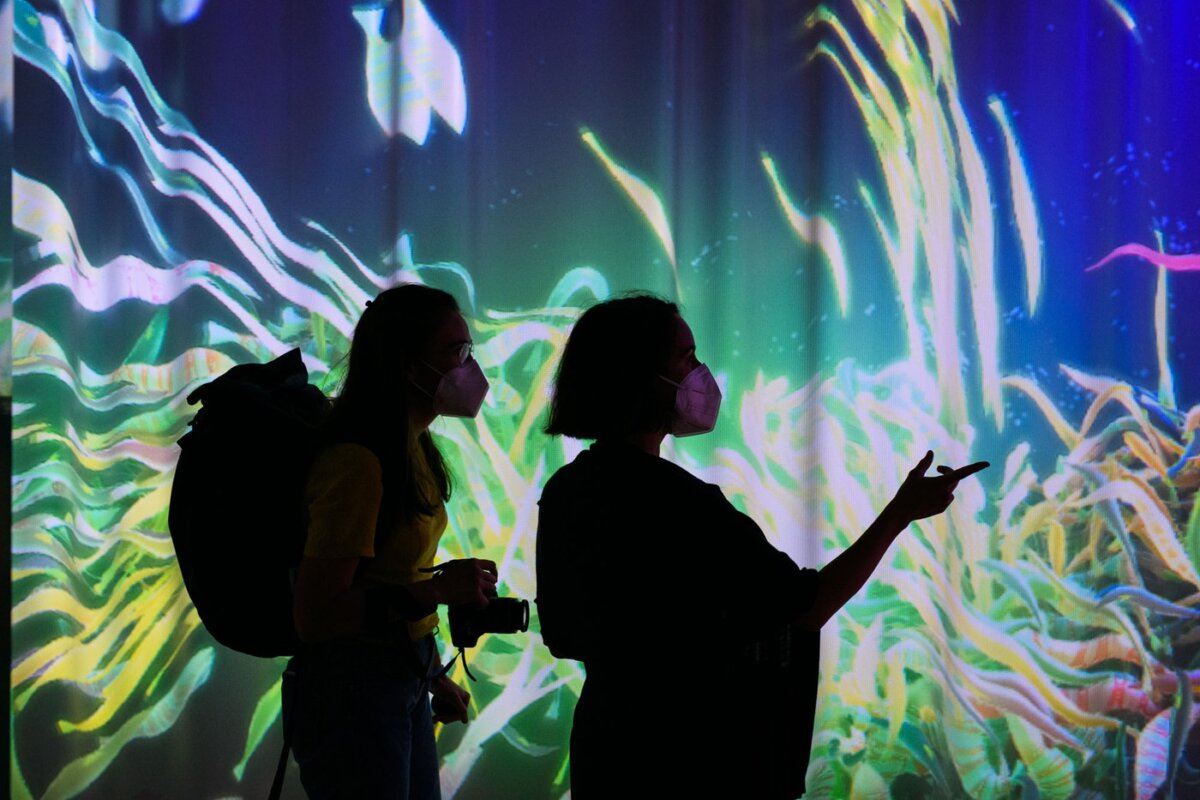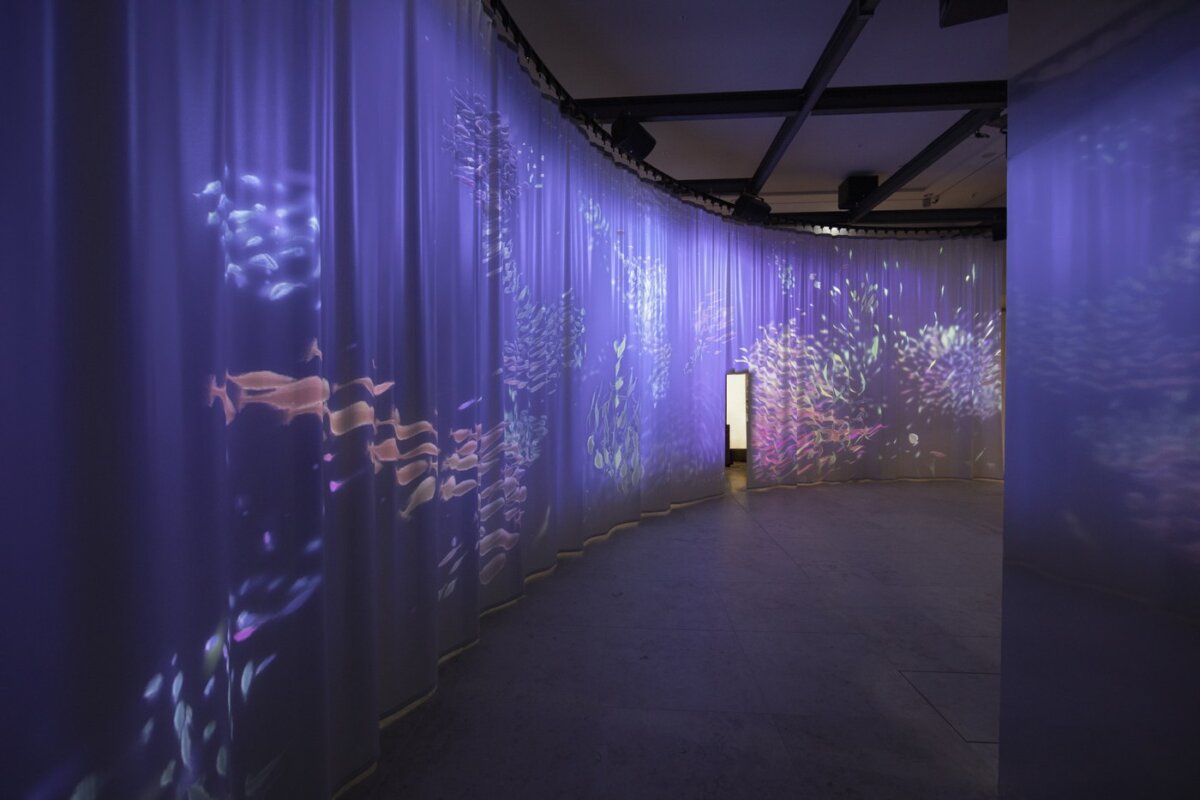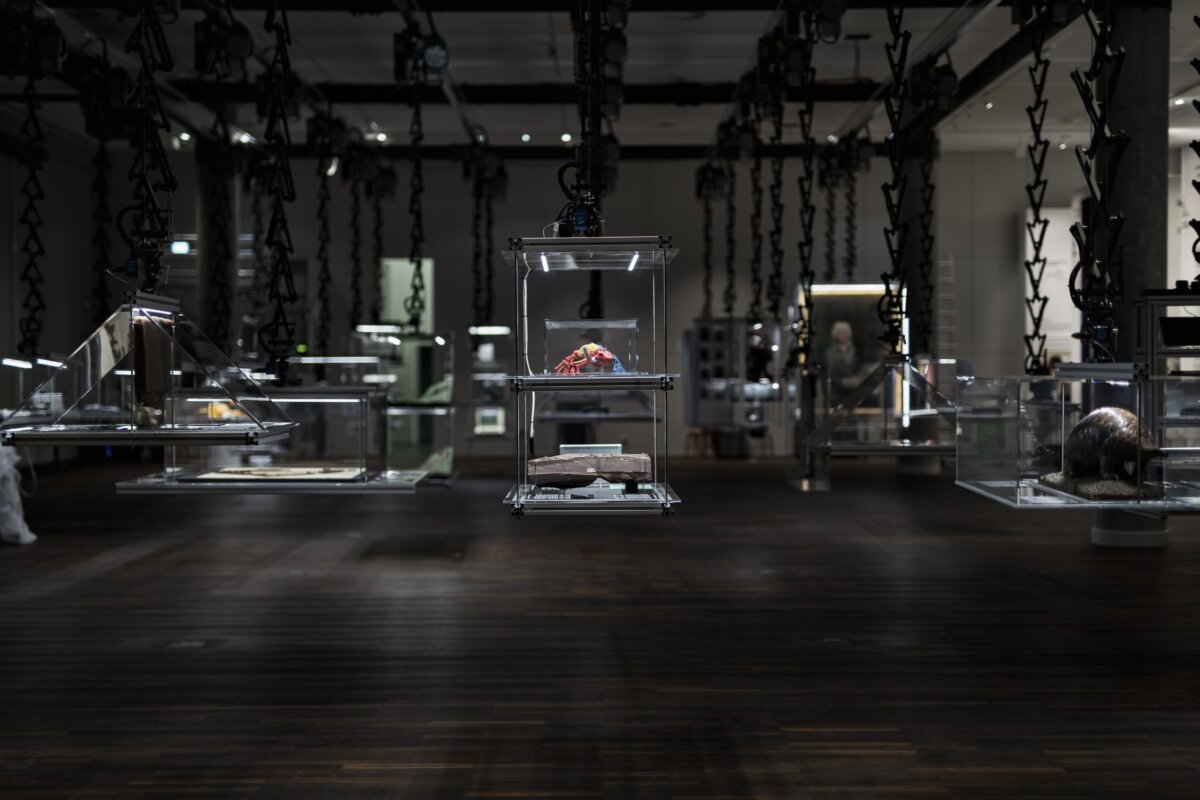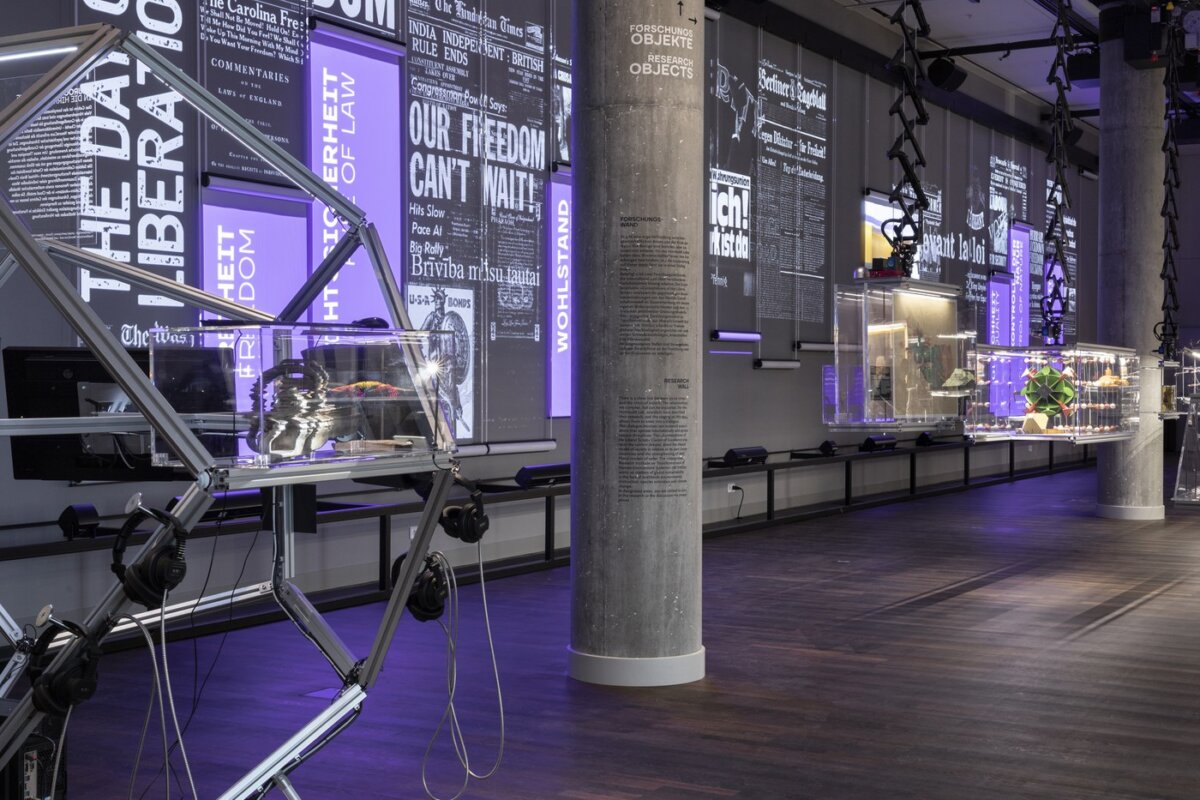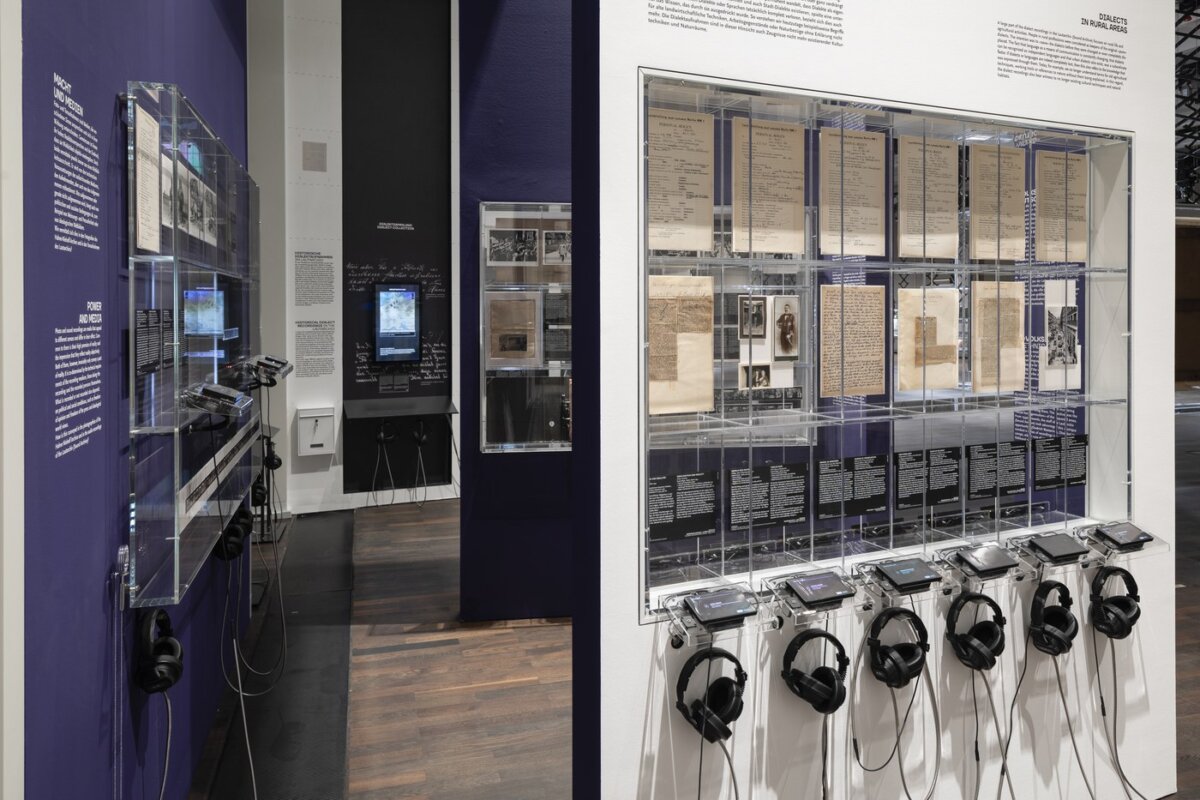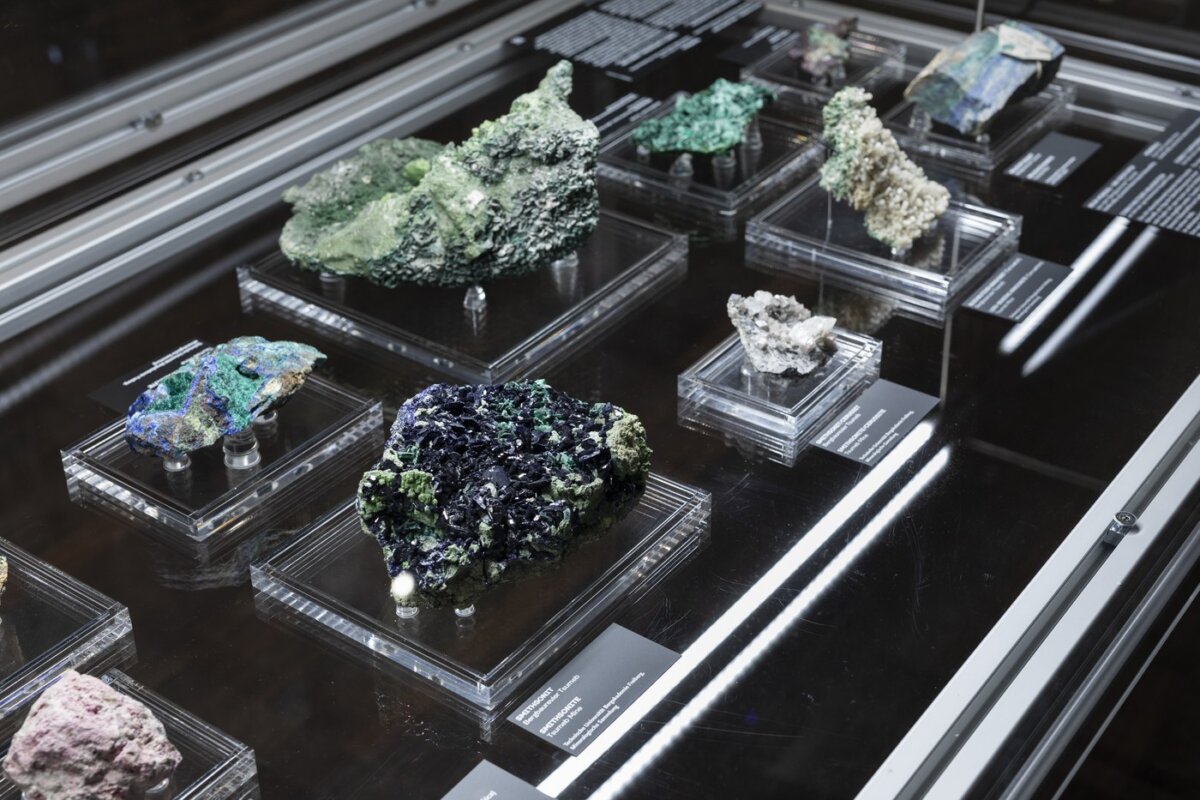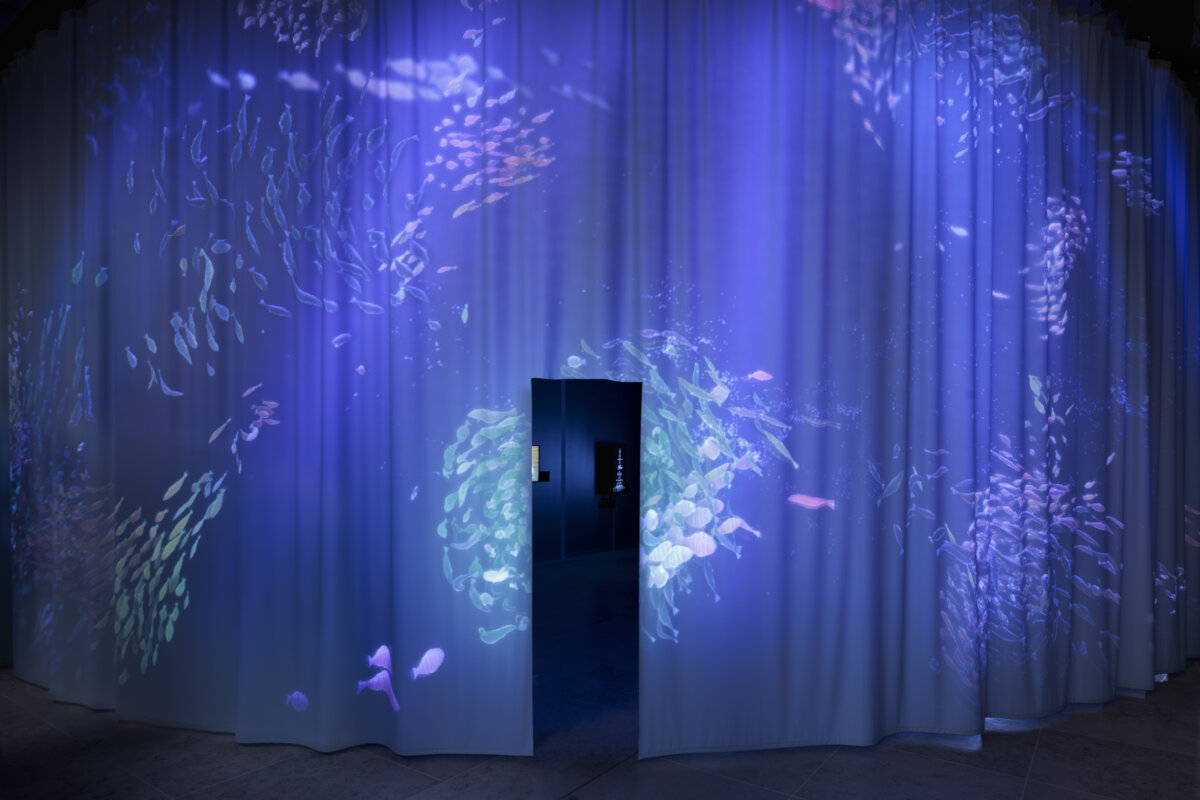
Humboldt-Universität zu Berlin / Ausstellungsgestaltung: Inside Outside, Petra Blaisse / Medienszenografie: SCHNELLE BUNTE BILDER / Foto: Philipp Plum
Behind the scenes
Greeting from the President of Humboldt-Universität zu Berlin, Prof. Dr.-Ing. Dr Sabine Kunst
Greeting from Dr Nina Lemmens, Director of the Joachim Herz Foundation
View of the exhibition
Gorch Pieken, the lead curator of the opening exhibition ‘After Nature’, gives an insight into the exhibition and explains the research wall.
Ibou Diop, curator of the exhibition, introduces the JANHEINZ JAHN ARCHIVE in the Humboldt Laboratory. The Janheinz Jahn Archive is part of the Institute for Asian and African Studies at the Humboldt University of Berlin and is located in the university library. Letters by Léopold Sédar Senghor, Langston Hughes and Aimé Césaire offer insights into the thinking and work of black writers in the 1950s-60s, supplemented by visual and audio material on important cultural festivals of this era of intellectual and formal decolonisation.
Curator Johanna Stapelfeldt explains how the objects in the Humboldt Lab are connected to each other.
Picture gallery
The backstage area of science
The Humboldt Labor is staged like the backstage area of a theatre. Aura Melis from Inside Outside | Petra Blaisse and Federico Martelli from Cookies explain how the process-orientation of science is reflected in the design of the exhibition in the Humboldt Lab.
Matters of Activity – Bacteria as architects
The MATTERS OF ACTIVITY Cluster of Excellence investigates materials that are built by bacteria. Architects and biologists are working together to research new, sustainable materials. Some of these bacterial structures can be seen in the Humboldt Lab.
The grammar of society – the SCRIPTS Cluster of Excellence
The Cluster of Excellence ‘Contestations of the Liberal Script’ (SCRIPTS) at the Humboldt Lab is focussing on the promises of the liberal order: What do they consist of? What problems and conflicts do they entail and what internal contradictions are there? In the Humboldt Lab’s opening exhibition, SCRIPTS also looks at how liberal democracies are responding to current challenges such as the coronavirus pandemic and how they differ from authoritarian states.
The intelligence of schools – how to research schools of fish
In the Humboldt Laboratory, the interactive projection of a school of fish reacts to visitors. The swarm symbolises the complexity and vulnerability of human-environment systems – but also swarm intelligence. Scientists Jens Krause and Pawel Romanczuk from the Science of Intelligence Cluster of Excellence present their work.
Urban gardening – how the city becomes edible
In times of climate change, the importance of green spaces in cities is becoming increasingly apparent. Ina Säumel conducts and supervises research on urban and landscape ecology, land use change, sustainable resource utilisation and environmental pollution, with a particular focus on developing concepts for multifunctional, biodiversity-friendly and healthy landscapes. As part of the EdiCitNet (Edible City Network) project at the IRI THESys Institute at Humboldt-Universität zu Berlin, she is researching, among other things, how citizens can be involved in the design of urban green spaces. From winter 2021, the HU will be presenting this and other projects in the Humboldt Lab at the Humboldt Forum.
Sustainable land management – how to preserve the Spreewald
Climate change and biodiversity loss require sustainability innovations in land management. Bettina König and her group are researching how different stakeholders can systematically work together to develop such systemically conceived ideas for more sustainable land management. At the IRI THESys Institute at Humboldt-Universität zu Berlin, she is investigating which methods and tools support stakeholders in developing their ideas across value chains, cultural landscapes and regions as part of the ‘ginkoo’ project.
The pharmacy in Berlin Palace and what a job reference can tell us about it
In 1731, the court apothecary at Berlin Palace, Caspar Neumann, issued a certificate of employment to the servant Maria Elisabeth Danielin. Humboldt University student Ida Lieback explains what it is all about and why it is on display in the Humboldt Laboratory at the Humboldt Forum.
